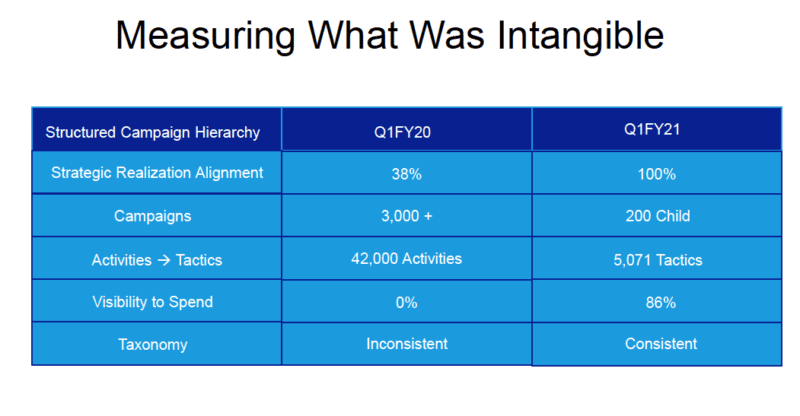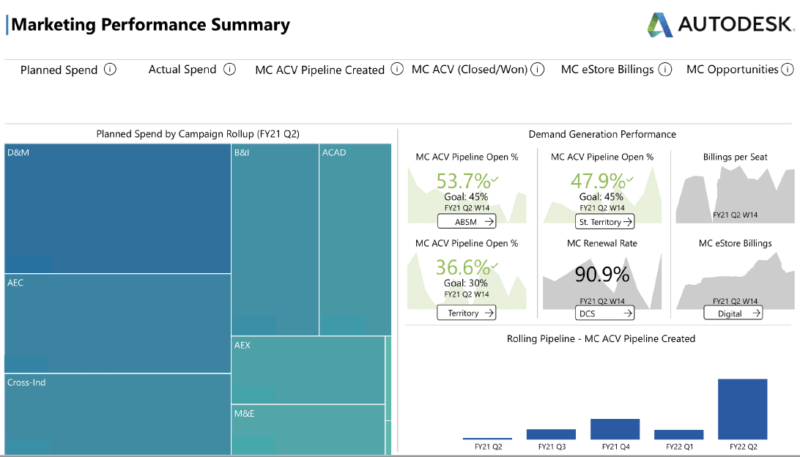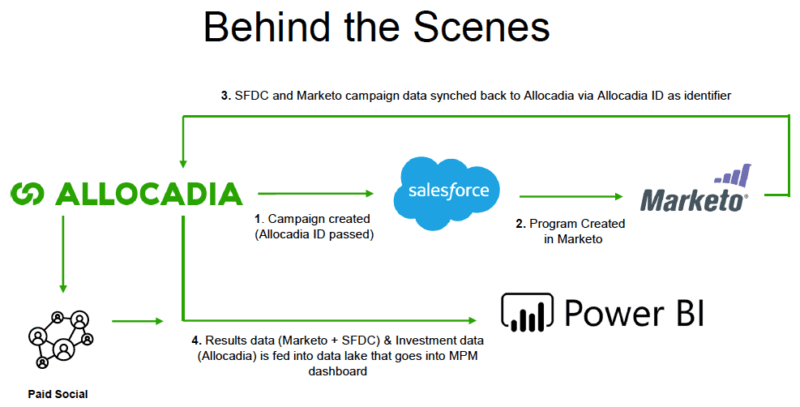
Autodesk faced a challenge with which many marketers are familiar. Teams that were expert in their various disciplines — channel marketing, regional marketing, industry marketing, etc. — had diverged into silos in the absence of a strong marketing performance management program. There was no unified view of how marketing spend affected program goals across all of these initiatives.
Overcoming the pain point trifecta
In short, the company faced three major challenges:
- Various marketing teams were operating in silos.
- Tracking of marketing spend was poor.
- The marketing team was unable to track spend toward performance.
In a recent talk at the MarTech virtual conference, Autodesk’s Zoe Marquardt, the company’s consultant on marketing performance management (MPM), explained how the company managed to tackle these three interrelated problems by instituting an MPM program.
“Without breaking down those silos, you can’t get to a point where you’re tracking spend in a unified way across campaigns,” said Marquardt. “You can’t even develop unified campaigns across the company.”
Alignment and unity to drive success with MPM
As it undertook this initiative, Autodesk had four goals:
- To get more visibility into marketing tactics and their performance.
- To enable a quarterly planning process with a steering-level review to ensure alignment.
- To define expectations for next quarter’s execution and spend.
- To enable the company to validate if expectations are met after executing.
“We have achieved [these objectives] to some extent,” said Marquardt. “Of course, we’re always looking to improve and build upon these goals, to get more visibility into marketing tactics and their performance.”
To help it, Audodesk adopted Allocadia’s MPM software, and, by getting all marketing groups across the company to utilize the platform, have been able to achieve an overview of all of the company’s campaigns and tactics.

Marquardt says the company ties tactics with campaigns and performance using the software, and can also tailor dashboards to address the needs of various constituents within the company.
Autodesk now conducts quarterly planning meetings to ensure that all spending aligns with the company’s overarching goals.
“It’s one thing to be able to track your tactics and their performance, it’s another thing to be able to then, return to those individuals who are setting strategy at a higher level to say, ‘you know, does this make sense? This appears to be doing well, but is it really in line with our business objectives?’” she said. “So we do that on a quarterly basis with a steering team.”
At each quarterly meeting, marketers come in with already-defined expectations for the next quarter’s execution and spend, which makes it easier for the steering team to come in and validate those decisions.
Additionally, the quarterly planning session is a time to look over the previous quarter and see whether the campaigns and tactics actually perform as expected.
“Exceeding the numbers you expected for a quarter is one thing, but it’s another to really understand why you’re doing well,” said Marquardt. “And, of course, to do that you have to understand your audiences, your campaigns, and everything that’s in that intersection when you’re actually executing marketing strategy.”
Measuring what was intangible

At the quarterly meetings, and on a regular basis, marketers go into Allocadia and view the marketing performance summary dashboard.
“It’s kind of that quintessential image of MPM at Autodesk at this point,” Marquardt said. “Because it’s this entry point right into the MPM program and marketing execution that would have been impossible a year ago.”
Marquardt notes that the left side of the dashboard shows planned spend rolled up by campaign. On the right, users can click into the Demand Generation Performance charts to view the campaigns and spend that drove that performance.
Each marketer enters in their quarterly plan for a campaign and how much will be spent, then the information on that tactic carries through to execution, and results and actuals that are pumped back in to feed the dashboard summary.
“So we really do have this holistic view,” said Marquardt. “Holistic in the sense that it covers marketing at Autodesk and holistic in the sense that it covers that beginning to end process when a marketer is planning, and then seeing the results and then adapting performance from there, of course.”
Marquardt says the dashboard, and the multiple other dashboards related to it, is a framework that the company established.
Allocadia is a central component and, within that interface, the marketers create tactics — a paid media execution, a webcast, or any other sort of digital marketing execution — and then, depending on what kind of activity it is, connect it to external software.

If it is a Salesforce activity, it could go onto Marketo. Paid social or paid media would go through, an internal process, and then out to the various vendors that the company uses — Google Ads, LinkedIn, etc.
Since all of those activities are originating in Allocadia, each has an Allocadia ID, so they need to get everything back into the data lake and then into Power BI to be able to see the big picture. It’s not a linear process. Marquardt describes it as like a spiderweb, with strands going out to various places.
“But as long as we can connect everything to an Allocadia ID, we can get it back into a cohesive view in the end,” she said. “And that’s really where our analytics team comes in and produces these really comprehensive and deep reports, based on the data that we’ve provided and tagged with this unique ID.”
For more on Autodesk’s MPM program, view the on-demand version of the MarTech session.
The post How Autodesk overhauled its marketing to align for better performance management appeared first on Search Engine Land.
Source: IAB

